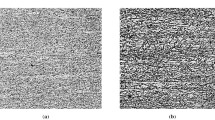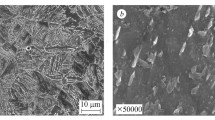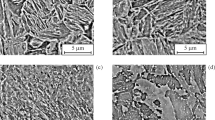Conclusions
-
1.
For specimens quenched after induction heating we obtained a wider range of optimum tempering temperatures producing maximum impact toughness (180–240°). In this heat treatment the temper brittleness zone is narrowed down.
-
2.
The impact toughness of induction-hardened 45KhTR steel at a test temperature of 20° is approximately 20% higher than for steel quenched after heating in a muffle furnace.
-
3.
At reduced test temperatures induction heating has considerable advantages, such as the fact that the transition temperature to the brittle state for 45KhT steel is −60°, and −40° for 45KhTR steel; correspondingly, for specimens of both steels quenched after being heated in a muffle furnace the transition point to the brittle state is −20°.
Similar content being viewed by others
Rights and permissions
About this article
Cite this article
Nazarova, T.N. Critical temperature of brittle failure in induction-hardened steel. Met Sci Heat Treat 4, 421–422 (1962). https://doi.org/10.1007/BF00820029
Issue Date:
DOI: https://doi.org/10.1007/BF00820029




